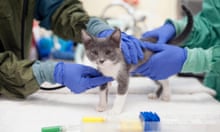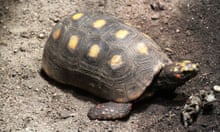Name: Fish tanks.
Age: The first aquariums date to the middle of the 19th century.
Appearance: A rectangular glass box, filled with water, plants and lots of colourful tropical fish.
Sounds lovely. No, it’s bad.
How can having a fish tank be bad? It’s environmentally bad.
Just one fish tank? It’s not just one. About 4 million households in the UK have pet fish and about 70% of those keep tropical freshwater fish.
But how much environmental harm can an aquarium cause? As much as riding a motorbike.
How would you even begin to measure that? According to a study by Cardiff University, transporting tropical fish, running a pump and heating a 400-litre tank creates the equivalent of 635kg of CO2 a year.
Is that a lot? It’s the same as travelling 3,483 miles on a motorbike, or 2,265 miles in an average petrol car, according to official data.
I don’t understand. Is the aquarium in the car with me? These figures are just for comparison.
Then let’s compare like for like. Do tropical fish generate more CO2 than other pets? In many cases, yes. Keeping your standard meat-eating cat produces only about 250kg of CO2 a year – and you can reduce that by feeding them fish.
Does your calculation include leaving the TV on for them, which I do while I’m at work? You leave the TV on for your fish?
No, for my cats. But, coincidentally, they do like programmes about fish. That will add to the total. But cats and fish are nowhere near as damaging as dogs.
You’re telling me. My sister’s dog ate an entire duvet. I meant environmentally – a recent study estimated that feeding wet food to a medium-sized dog for a year would account for 6,541kg of CO2, the equivalent of about 14 round-trip flights in Europe.
And dry food? Just 828kg, which is better, but still worse than the fish.
Is there anything aquarium enthusiasts can do to mitigate the impact of their hobby? They could downsize. A 400-litre tank is huge; about 1.5 metres (5ft) wide. A 50-litre tank would be responsible for as little as 85kg of CO2 a year, which is less than using your washing machine (118kg).
With all the planet-hating dog owners doing as they please, give me one good reason why I shouldn’t own a 5ft aquarium. It will cost you about £2,000, fish not included.
That’s a very good reason. What about just one goldfish in a bowl? Much cheaper – and only 25kg of CO2 a year.
Do say: “Leave the tropical fish in the tropics.”
Don’t say: “I got the 5ft tank secondhand. Now, choose your lobster and let’s eat.”











Comments (…)
Sign in or create your Guardian account to join the discussion